Arduino Tutorials

In this video lesson we show you step by step instructions on how to create a remote controlled RGB LED. We show you how to control both brightness and color of the LED. This is the solution set for the homework assigned in Tutorial 67. You can get the kit I am using for this series at the following link: https://amzn.to/2I7N4Ek I strongly suggest picking up an arduino nano, since it can plug directly into the breadboard, making a portable system more practical. You can pick one up here: https://amzn.to/2WXTC2M As projects get more complicated in these lessons, you guys really need to get a set of breadboard jumper wires which allow you to make neater connections on the board in your projects. You can pick a pack of these wires up here: https://amzn.to/2XrY5Kq In addition as projects get more complicated, you are going to need a bigger breadboard. This is a reasonable one here: https://amzn.to/2IY4d3M You guys can help me out over at Patreon, and that will help me keep my gear updated, and help me keep this quality content coming: https://www.patreon.com/PaulMcWhorter [Disclosure of Material Connection: I am a participant in the Amazon Services LLC Associates Program, an affiliate advertising program designed to provide a means for sites to earn advertising fees by advertising and linking to amazon.com. This means if you visit the link and purchase the item, I will receive an affiliate commission. Regardless, I only recommend products or services I use personally and believe will add value to my readers.] #Arduino
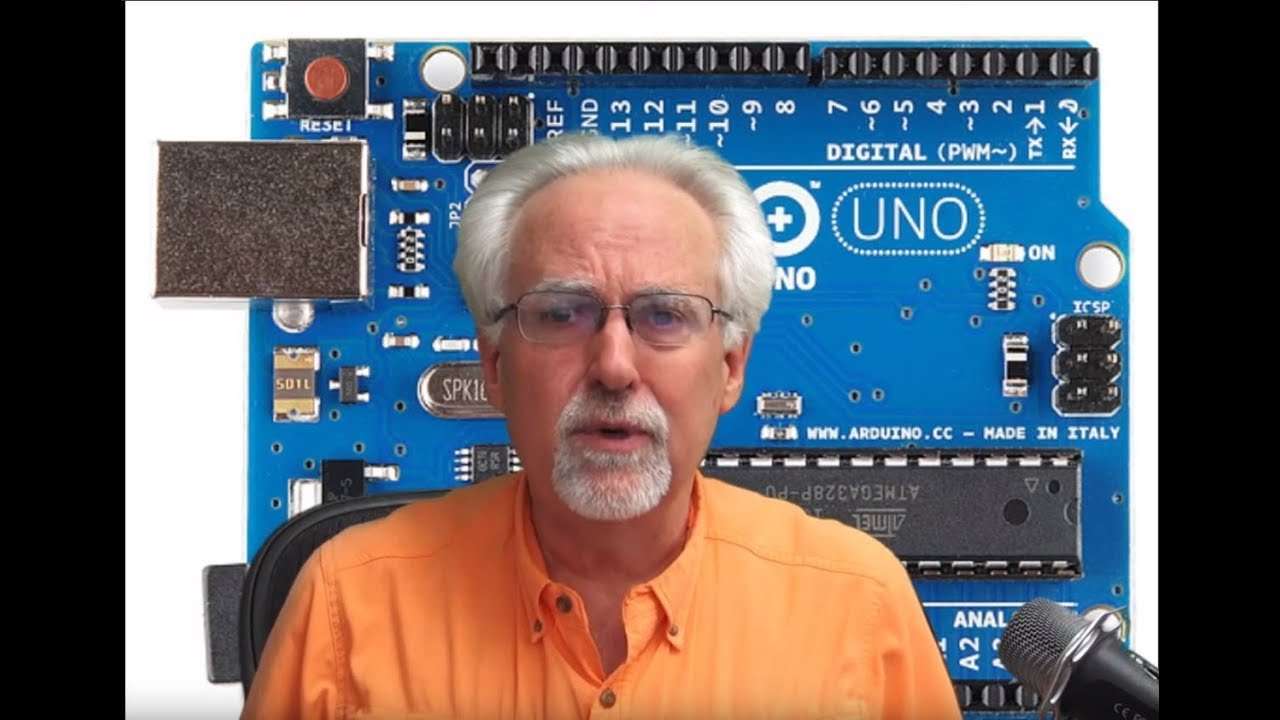
In this video we give you a homework assignment to build a dimmable LED which you control with an IR Remote Control. You should control not only the brightness, but also the color with the remote. The solution will be presented in Lesson 68. You can get the kit I am using for this series at the following link: https://amzn.to/2I7N4Ek I strongly suggest picking up an arduino nano, since it can plug directly into the breadboard, making a portable system more practical. You can pick one up here: https://amzn.to/2WXTC2M As projects get more complicated in these lessons, you guys really need to get a set of breadboard jumper wires which allow you to make neater connections on the board in your projects. You can pick a pack of these wires up here: https://amzn.to/2XrY5Kq In addition as projects get more complicated, you are going to need a bigger breadboard. This is a reasonable one here: https://amzn.to/2IY4d3M Check out the resources on our WEB site: https://toptechboy.com/arduino-tutorial-67-create-a-remote-controlled-rgb-led-with-brightness-and-color-control/ [Disclosure of Material Connection: I am a participant in the Amazon Services LLC Associates Program, an affiliate advertising program designed to provide a means for sites to earn advertising fees by advertising and linking to amazon.com. This means if you visit the link and purchase the item, I will receive an affiliate commission. Regardless, I only recommend products or services I use personally and believe will add value to my readers.] #Arduino
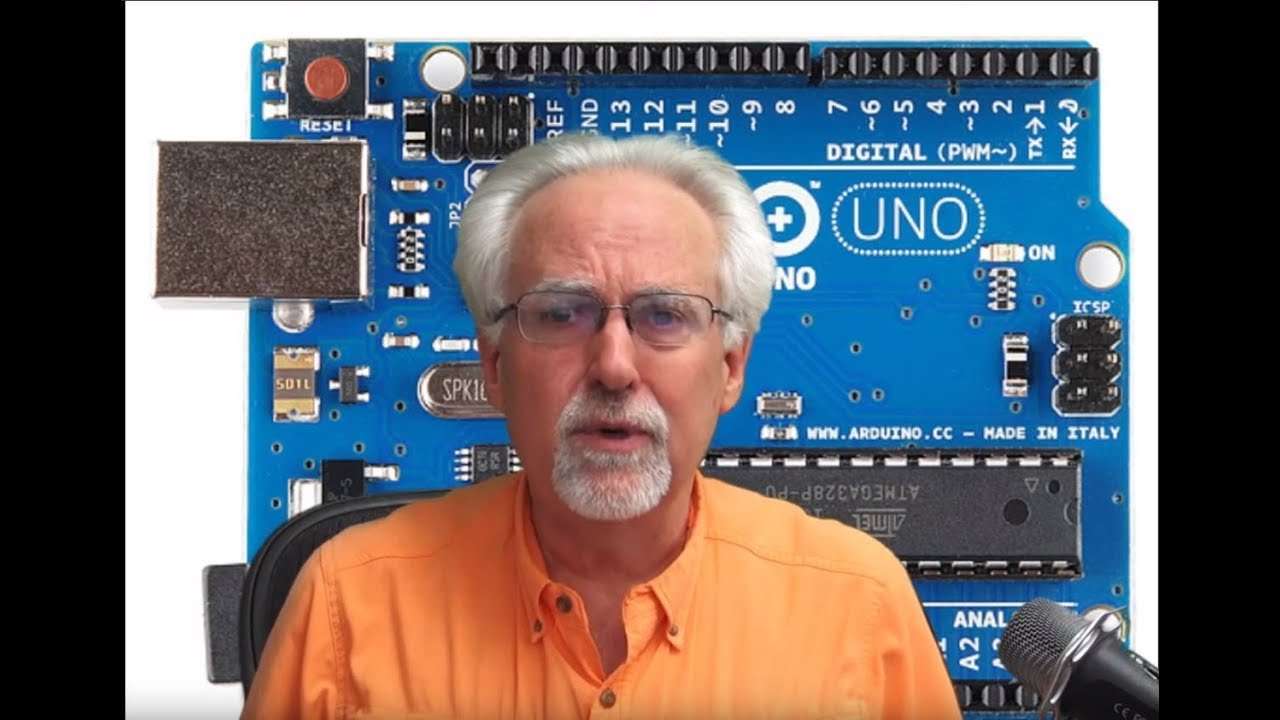
In this lesson we show to to control a DC motor with an IR remote control using an arduino. The project includes motor direction, speed, and on/off. Enjoy. You can get the kit I am using for this series at the following link: https://amzn.to/2I7N4Ek I strongly suggest picking up an arduino nano, since it can plug directly into the breadboard, making a portable system more practical. You can pick one up here: https://amzn.to/2WXTC2M As projects get more complicated in these lessons, you guys really need to get a set of breadboard jumper wires which allow you to make neater connections on the board in your projects. You can pick a pack of these wires up here: https://amzn.to/2XrY5Kq In addition as projects get more complicated, you are going to need a bigger breadboard. This is a reasonable one here: https://amzn.to/2IY4d3M You guys can help me out over at Patreon, and that will help me keep my gear updated, and help me keep this quality content coming: https://www.patreon.com/PaulMcWhorter [Disclosure of Material Connection: I am a participant in the Amazon Services LLC Associates Program, an affiliate advertising program designed to provide a means for sites to earn advertising fees by advertising and linking to amazon.com. This means if you visit the link and purchase the item, I will receive an affiliate commission. Regardless, I only recommend products or services I use personally and believe will add value to my readers.] #Arduino
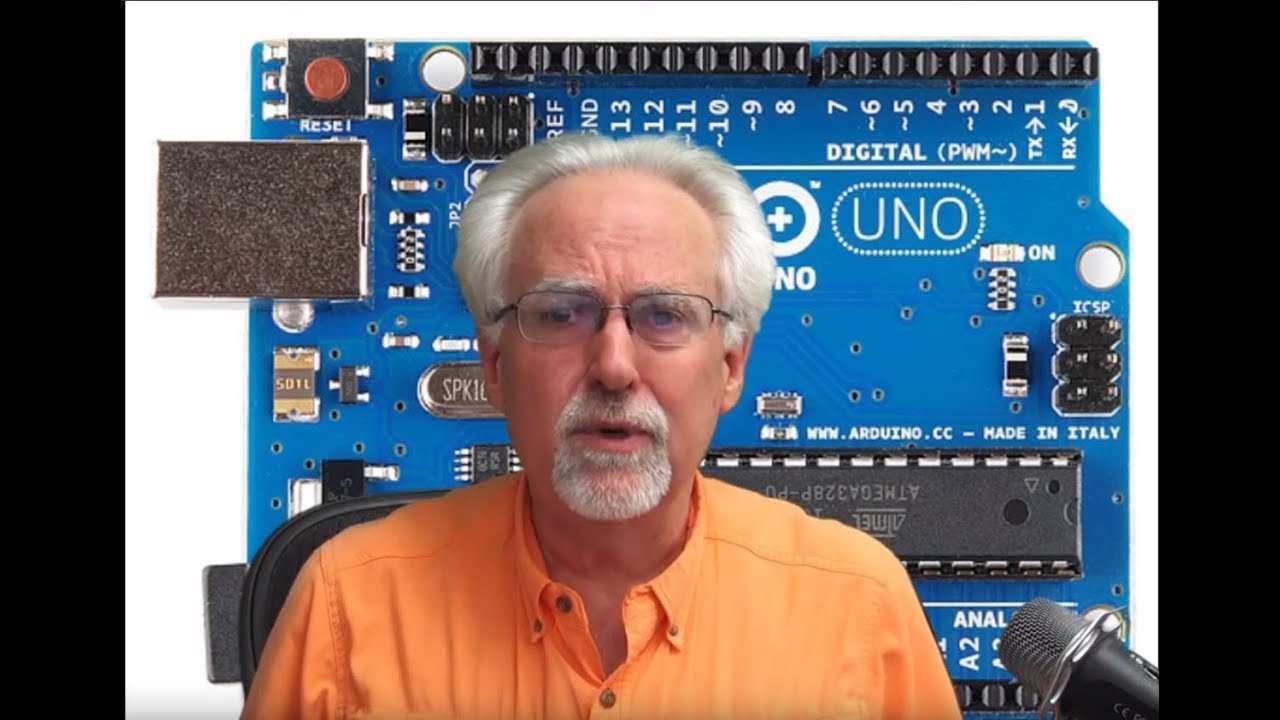
In this tutorial we show you had to add an Infrared (IR) remote to your arduino project. This lesson shows how to map the HEX code coming from the IR module into useful commands. You can get the kit I am using for this series at the following link: https://amzn.to/2I7N4Ek I strongly suggest picking up an arduino nano, since it can plug directly into the breadboard, making a portable system more practical. You can pick one up here: https://amzn.to/2WXTC2M As projects get more complicated in these lessons, you guys really need to get a set of breadboard jumper wires which allow you to make neater connections on the board in your projects. You can pick a pack of these wires up here: https://amzn.to/2XrY5Kq In addition as projects get more complicated, you are going to need a bigger breadboard. This is a reasonable one here: https://amzn.to/2IY4d3M You can get the code and other details on our WEB site HERE: https://toptechboy.com/arduino-tutorial-65-creating-useful-commands-from-ir-remote-buttons/ You guys can help me out over at Patreon, and that will help me keep my gear updated, and help me keep this quality content coming: https://www.patreon.com/PaulMcWhorter [Disclosure of Material Connection: I am a participant in the Amazon Services LLC Associates Program, an affiliate advertising program designed to provide a means for sites to earn advertising fees by advertising and linking to amazon.com. This means if you visit the link and purchase the item, I will receive an affiliate commission. Regardless, I only recommend products or services I use personally and believe will add value to my readers.] #Arduino
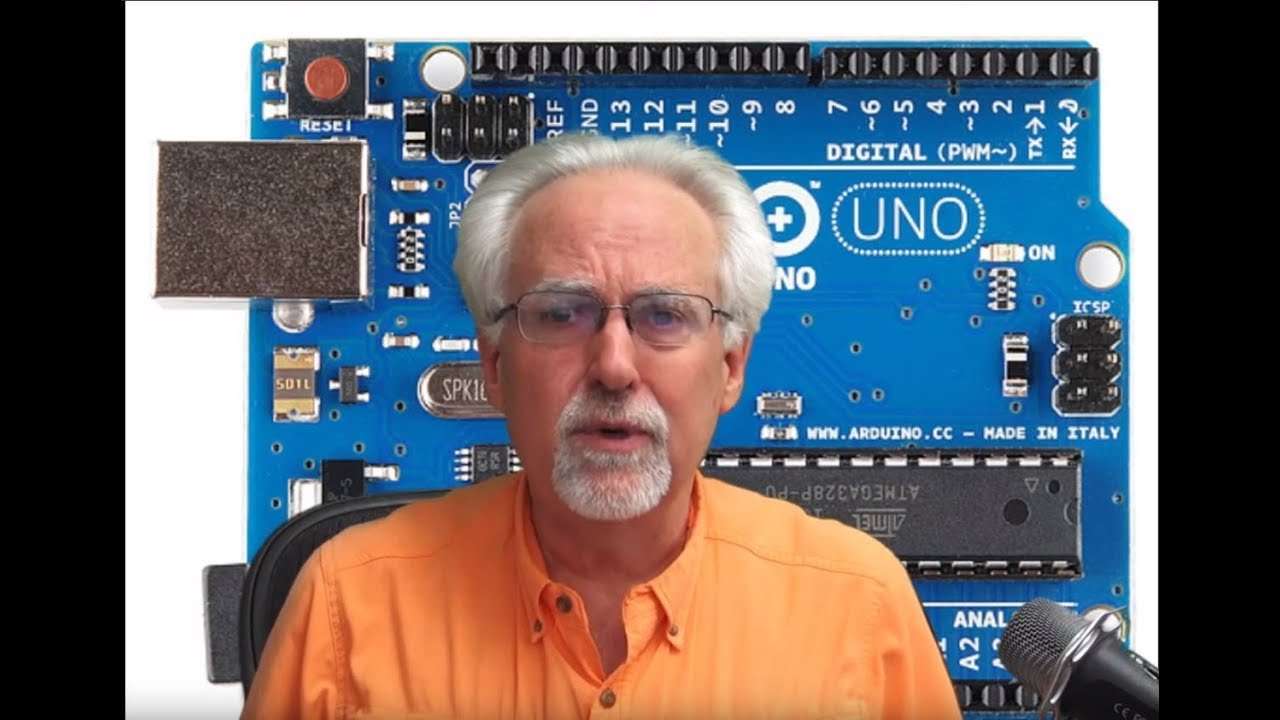
In this tutorial we show you had to add an Infrared (IR) remote to your arduino project. This lesson gets you stated, and then we will add features in the next lesson. You can get the kit I am using for this series at the following link: https://amzn.to/2I7N4Ek I strongly suggest picking up an arduino nano, since it can plug directly into the breadboard, making a portable system more practical. You can pick one up here: https://amzn.to/2WXTC2M As projects get more complicated in these lessons, you guys really need to get a set of breadboard jumper wires which allow you to make neater connections on the board in your projects. You can pick a pack of these wires up here: https://amzn.to/2XrY5Kq In addition as projects get more complicated, you are going to need a bigger breadboard. This is a reasonable one here: https://amzn.to/2IY4d3M You can find more resources on our WEB site: https://toptechboy.com/arduino-tutorial-64-understanding-and-using-the-infrared-ir-remote-to-control-a-project/ You guys can help me out over at Patreon, and that will help me keep my gear updated, and help me keep this quality content coming: https://www.patreon.com/PaulMcWhorter [Disclosure of Material Connection: I am a participant in the Amazon Services LLC Associates Program, an affiliate advertising program designed to provide a means for sites to earn advertising fees by advertising and linking to amazon.com. This means if you visit the link and purchase the item, I will receive an affiliate commission. Regardless, I only recommend products or services I use personally and believe will add value to my readers.] #Arduino
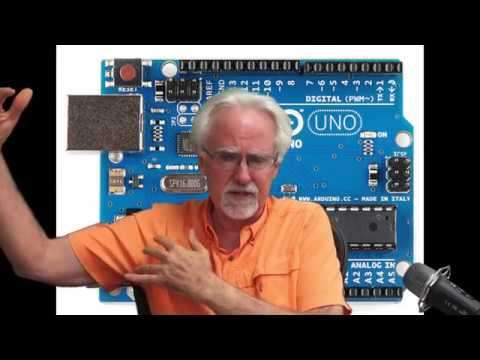
In this lesson we give some example and practice problems for dimensional analysis. Dimensional Analysis is one of the most important methodologies in the Engineer's and Scientist's tool chest, and this video will help you master the technique with step-by-step instructions. You guys can help me out over at Patreon, and that will help me keep my gear updated, and help me keep this quality content coming: https://www.patreon.com/PaulMcWhorter Also, check out the valuable resources on our WEB site: https://toptechboy.com/arduino-tutorial-63-dimensional-analysis-example-problems/ #dimensionalanalysis
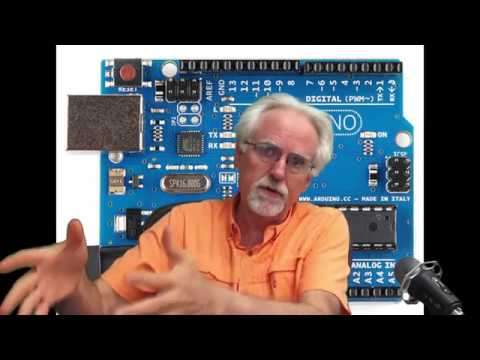
In this lesson we take you through an important engineering method known as dimensional analysis. This technique will allow you to convert between any set of units into any other set of units. You guys can help me out over at Patreon, and that will help me keep my gear updated, and help me keep this quality content coming: https://www.patreon.com/PaulMcWhorter More information on our WEB site: https://toptechboy.com/arduino-tutorial-62-understanding-how-to-use-dimensional-analysis/ #DimensionalAnalysis
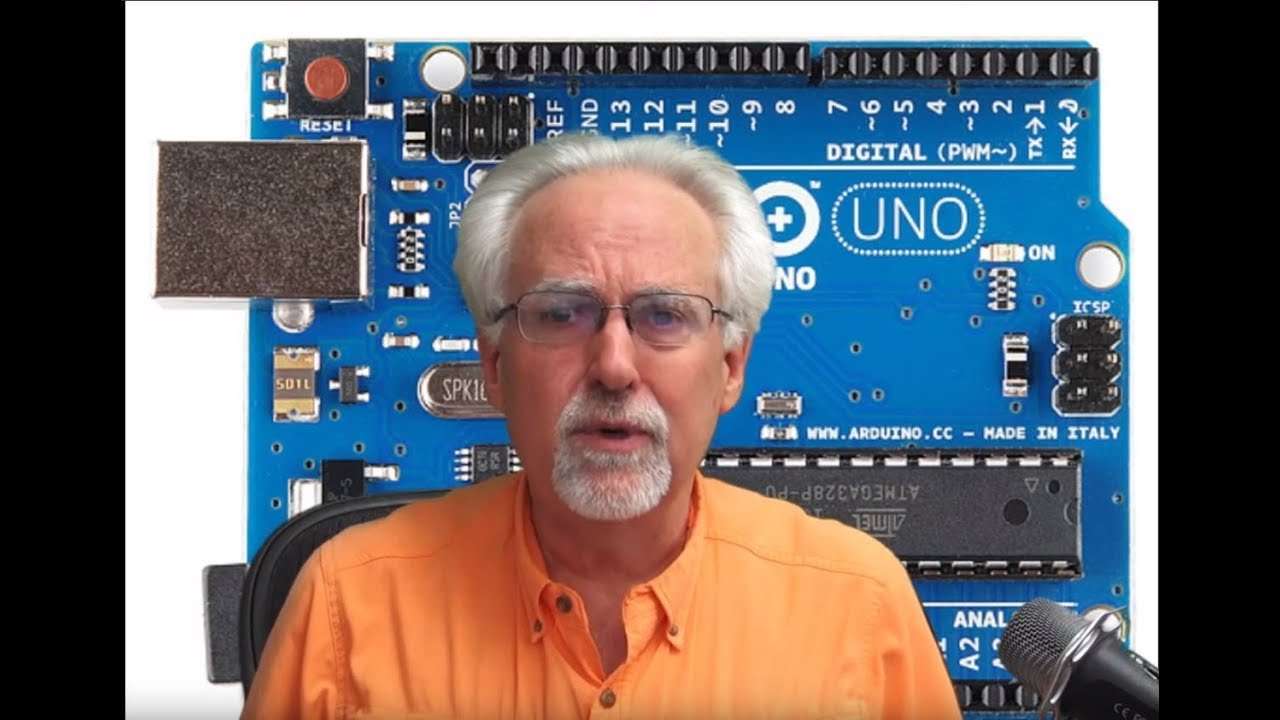
In this lesson you learn how to improve the precision of your distance measurements by averaging a large number of readings. You can get the kit I am using for this series at the following link: https://amzn.to/2I7N4Ek I strongly suggest picking up an arduino nano, since it can plug directly into the breadboard, making a portable system more practical. You can pick one up here: https://amzn.to/2WXTC2M As projects get more complicated in these lessons, you guys really need to get a set of breadboard jumper wires which allow you to make neater connections on the board in your projects. You can pick a pack of these wires up here: https://amzn.to/2XrY5Kq In addition as projects get more complicated, you are going to need a bigger breadboard. This is a reasonable one here: https://amzn.to/2IY4d3M You can get more details of this project at our WEB site here: https://toptechboy.com/arduino-tutorial-61-improving-precision-of-your-distance-measurements/ You guys can help me out over at Patreon, and that will help me keep my gear updated, and help me keep this quality content coming: https://www.patreon.com/PaulMcWhorter [Disclosure of Material Connection: I am a participant in the Amazon Services LLC Associates Program, an affiliate advertising program designed to provide a means for sites to earn advertising fees by advertising and linking to amazon.com. This means if you visit the link and purchase the item, I will receive an affiliate commission. Regardless, I only recommend products or services I use personally and believe will add value to my readers.] #Arduino
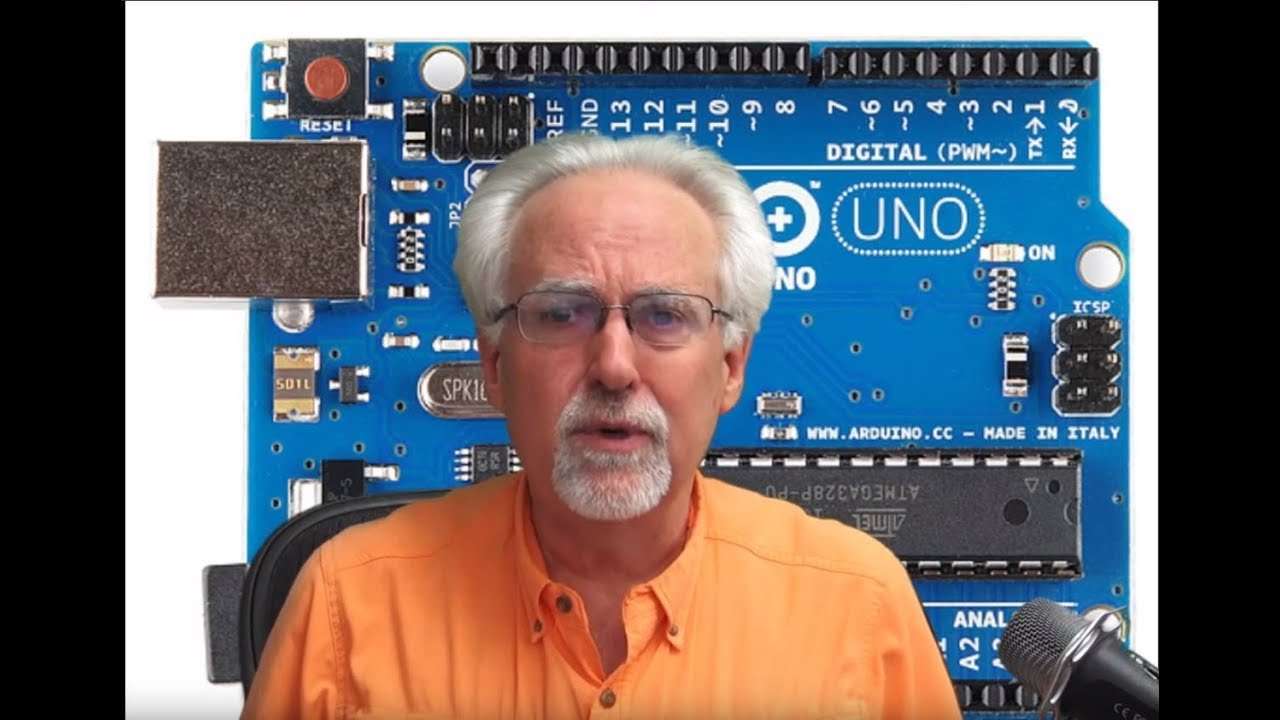
In this lesson we show how to add a "go" button to our portable distance measurement sensor. This is the solution to the homework problem assigned in Lesson 59 You can get the kit I am using for this series at the following link: https://amzn.to/2I7N4Ek I strongly suggest picking up an arduino nano, since it can plug directly into the breadboard, making a portable system more practical. You can pick one up here: https://amzn.to/2WXTC2M As projects get more complicated in these lessons, you guys really need to get a set of breadboard jumper wires which allow you to make neater connections on the board in your projects. You can pick a pack of these wires up here: https://amzn.to/2XrY5Kq In addition as projects get more complicated, you are going to need a bigger breadboard. This is a reasonable one here: https://amzn.to/2IY4d3M Follow this lesson on our WEB site; https://toptechboy.com/arduino-tutorial-60-add-a-go-button-to-your-distance-sensor/ You guys can help me out over at Patreon, and that will help me keep my gear updated, and help me keep this quality content coming: https://www.patreon.com/PaulMcWhorter [Disclosure of Material Connection: I am a participant in the Amazon Services LLC Associates Program, an affiliate advertising program designed to provide a means for sites to earn advertising fees by advertising and linking to amazon.com. This means if you visit the link and purchase the item, I will receive an affiliate commission. Regardless, I only recommend products or services I use personally and believe will add value to my readers.] #Arduino

In this lesson we build out the project assigned in Lesson 58. We go step-by-step through the build and programming of a portable distance measurement system based on the HC-SR04 Ultrasonic Sensor. The gear below will be useful for this project. You can get the kit I am using for this series at the following link: https://amzn.to/2I7N4Ek I strongly suggest picking up an arduino nano, since it can plug directly into the breadboard, making a portable system more practical. You can pick one up here: https://amzn.to/2WXTC2M As projects get more complicated in these lessons, you guys really need to get a set of breadboard jumper wires which allow you to make neater connections on the board in your projects. You can pick a pack of these wires up here: https://amzn.to/2XrY5Kq In addition as projects get more complicated, you are going to need a bigger breadboard. This is a reasonable one here: https://amzn.to/2IY4d3M Follow along on our WEB site; https://toptechboy.com/arduino-tutorial-59-how-to-build-a-portable-distance-sensor-ultrasonic-sensor/ You guys can help me out over at Patreon, and that will help me keep my gear updated, and help me keep this quality content coming: https://www.patreon.com/PaulMcWhorter [Disclosure of Material Connection: I am a participant in the Amazon Services LLC Associates Program, an affiliate advertising program designed to provide a means for sites to earn advertising fees by advertising and linking to amazon.com. This means if you visit the link and purchase the item, I will receive an affiliate commission. Regardless, I only recommend products or services I use personally and believe will add value to my readers.] #Arduino

In this lesson we begin to explore building a portable distance sensor based on the HC-SR04 Ultrasonic Sensor. In order to do this, we must determine how to power the system, and we need some form of portable display. You can get the kit I am using for this series at the following link: https://amzn.to/2I7N4Ek I strongly suggest picking up an arduino nano, since it can plug directly into the breadboard, making a portable system more practical. You can pick one up here: https://amzn.to/2WXTC2M As projects get more complicated in these lessons, you guys really need to get a set of breadboard jumper wires which allow you to make neater connections on the board in your projects. You can pick a pack of these wires up here: https://amzn.to/2XrY5Kq In addition as projects get more complicated, you are going to need a bigger breadboard. This is a reasonable one here: https://amzn.to/2IY4d3M This lesson is available at our WEB site: https://toptechboy.com/arduino-tutorial-58-how-to-build-a-portable-distance-sensor-with-the-hc-sr04-ultrasonic-sensor/ You guys can help me out over at Patreon, and that will help me keep my gear updated, and help me keep this quality content coming: https://www.patreon.com/PaulMcWhorter [Disclosure of Material Connection: I am a participant in the Amazon Services LLC Associates Program, an affiliate advertising program designed to provide a means for sites to earn advertising fees by advertising and linking to amazon.com. This means if you visit the link and purchase the item, I will receive an affiliate commission. Regardless, I only recommend products or services I use personally and believe will add value to my readers.] #Arduino
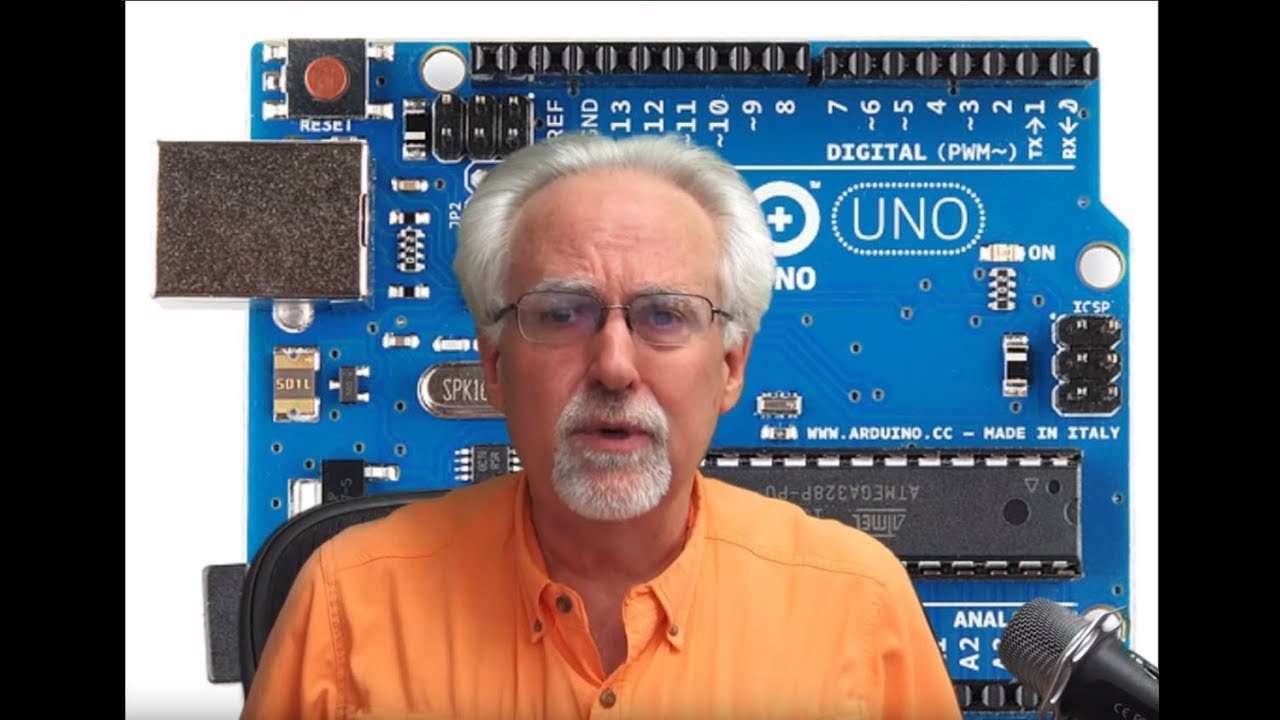
In this lesson we show how to graph multiple data channels on the Arduino Serial Plotter. You can get the kit I am using for this series at the following link: https://amzn.to/2I7N4Ek I strongly suggest picking up an arduino nano, since it can plug directly into the breadboard, making a portable system more practical. You can pick one up here: https://amzn.to/2WXTC2M As projects get more complicated in these lessons, you guys really need to get a set of breadboard jumper wires which allow you to make neater connections on the board in your projects. You can pick a pack of these wires up here: https://amzn.to/2XrY5Kq In addition as projects get more complicated, you are going to need a bigger breadboard. This is a reasonable one here: https://amzn.to/2IY4d3M Follow this lesson on our WEB site: https://toptechboy.com/arduino-tutorial-57-how-to-plot-multiple-channels-on-the-serial-plotter/ You guys can help me out over at Patreon, and that will help me keep my gear updated, and help me keep this quality content coming: https://www.patreon.com/PaulMcWhorter [Disclosure of Material Connection: I am a participant in the Amazon Services LLC Associates Program, an affiliate advertising program designed to provide a means for sites to earn advertising fees by advertising and linking to amazon.com. This means if you visit the link and purchase the item, I will receive an affiliate commission. Regardless, I only recommend products or services I use personally and believe will add value to my readers.] #Arduino
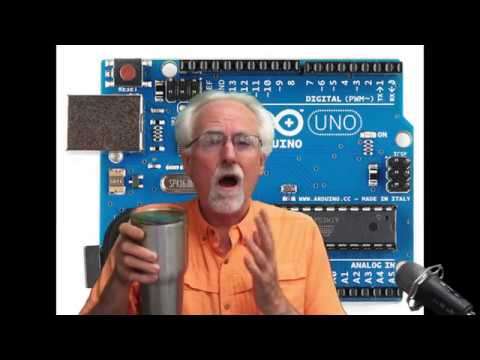
In this lesson we show how to plot live data over the Serial Plotter. While there are no formatting options, it really does help to be able to quickly and easily get a live look at your data. You can get the kit I am using for this series at the following link: https://amzn.to/2I7N4Ek I strongly suggest picking up an arduino nano, since it can plug directly into the breadboard, making a portable system more practical. You can pick one up here: https://amzn.to/2WXTC2M As projects get more complicated in these lessons, you guys really need to get a set of breadboard jumper wires which allow you to make neater connections on the board in your projects. You can pick a pack of these wires up here: https://amzn.to/2XrY5Kq In addition as projects get more complicated, you are going to need a bigger breadboard. This is a reasonable one here: https://amzn.to/2IY4d3M Follow this lesson on our WEB site: https://toptechboy.com/arduino-tutorial-56-how-to-graph-live-data-using-the-serial-plotter/ You guys can help me out over at Patreon, and that will help me keep my gear updated, and help me keep this quality content coming: https://www.patreon.com/PaulMcWhorter [Disclosure of Material Connection: I am a participant in the Amazon Services LLC Associates Program, an affiliate advertising program designed to provide a means for sites to earn advertising fees by advertising and linking to amazon.com. This means if you visit the link and purchase the item, I will receive an affiliate commission. Regardless, I only recommend products or services I use personally and believe will add value to my readers.] #Arduino
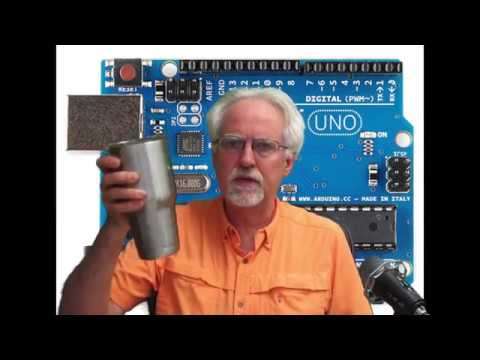
In this lesson we show you how to measure distance using the HC-SR04 ultrasonic sensor. We review the concept of dimensional analysis to help you understand how to get the correct units. You can get the kit I am using for this series at the following link: https://amzn.to/2I7N4Ek I strongly suggest picking up an arduino nano, since it can plug directly into the breadboard, making a portable system more practical. You can pick one up here: https://amzn.to/2WXTC2M As projects get more complicated in these lessons, you guys really need to get a set of breadboard jumper wires which allow you to make neater connections on the board in your projects. You can pick a pack of these wires up here: https://amzn.to/2XrY5Kq In addition as projects get more complicated, you are going to need a bigger breadboard. This is a reasonable one here: https://amzn.to/2IY4d3M Follow these lessons on our WEB site here: https://toptechboy.com/arduino-tutorial-55-measuring-distance-with-hc-sr04-ultrasonic-sensor/ You guys can help me out over at Patreon, and that will help me keep my gear updated, and help me keep this quality content coming: https://www.patreon.com/PaulMcWhorter [Disclosure of Material Connection: I am a participant in the Amazon Services LLC Associates Program, an affiliate advertising program designed to provide a means for sites to earn advertising fees by advertising and linking to amazon.com. This means if you visit the link and purchase the item, I will receive an affiliate commission. Regardless, I only recommend products or services I use personally and believe will add value to my readers.] #Arduino
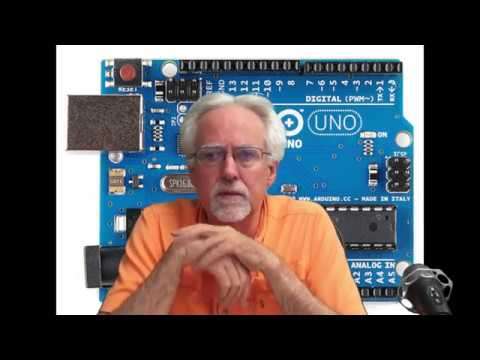
In this lesson we show how the circuit you built in the previous lesson can be used to measure the speed of sound. This is a pretty cool demonstration, and lets you practice your math skills. You can get the kit I am using for this series at the following link: https://amzn.to/2I7N4Ek I strongly suggest picking up an arduino nano, since it can plug directly into the breadboard, making a portable system more practical. You can pick one up here: https://amzn.to/2WXTC2M As projects get more complicated in these lessons, you guys really need to get a set of breadboard jumper wires which allow you to make neater connections on the board in your projects. You can pick a pack of these wires up here: https://amzn.to/2XrY5Kq In addition as projects get more complicated, you are going to need a bigger breadboard. This is a reasonable one here: https://amzn.to/2IY4d3M Follow along with this lesson on our WEB site: https://toptechboy.com/arduino-tutorial-54-measuring-speed-of-sound-with-hc-sr04-sensor/ You guys can help me out over at Patreon, and that will help me keep my gear updated, and help me keep this quality content coming: https://www.patreon.com/PaulMcWhorter [Disclosure of Material Connection: I am a participant in the Amazon Services LLC Associates Program, an affiliate advertising program designed to provide a means for sites to earn advertising fees by advertising and linking to amazon.com. This means if you visit the link and purchase the item, I will receive an affiliate commission. Regardless, I only recommend products or services I use personally and believe will add value to my readers.] #Arduino
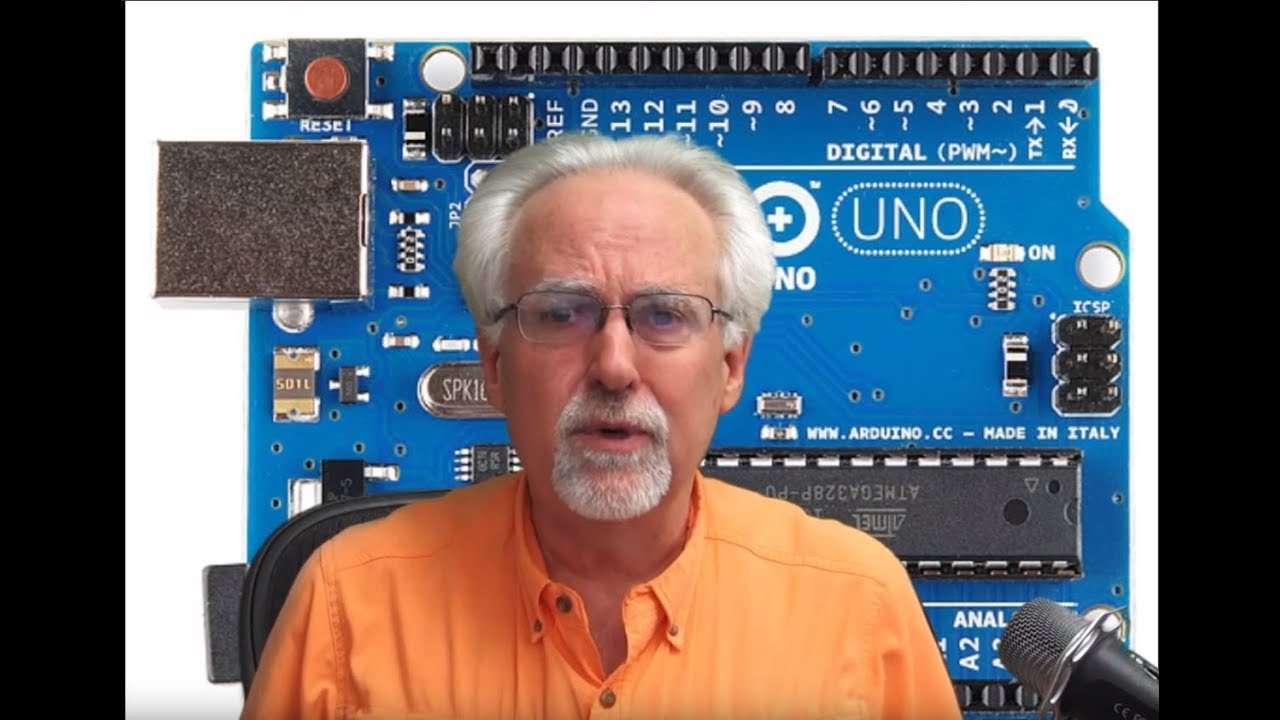
IN this lesson we begin to explore the HC-SR04 Ultrasonic Sensor, and show how you can connect and program the sensor. We will get our first sketch, which will measure the ping travel time. You can get the kit I am using for this series at the following link: https://amzn.to/2I7N4Ek I strongly suggest picking up an arduino nano, since it can plug directly into the breadboard, making a portable system more practical. You can pick one up here: https://amzn.to/2WXTC2M As projects get more complicated in these lessons, you guys really need to get a set of breadboard jumper wires which allow you to make neater connections on the board in your projects. You can pick a pack of these wires up here: https://amzn.to/2XrY5Kq In addition as projects get more complicated, you are going to need a bigger breadboard. This is a reasonable one here: https://amzn.to/2IY4d3M Check out our lessons on our WEB site; https://toptechboy.com/arduino-tutorial-53-understanding-and-connecting-the-hc-sr04-sensor/ You guys can help me out over at Patreon, and that will help me keep my gear updated, and help me keep this quality content coming: https://www.patreon.com/PaulMcWhorter [Disclosure of Material Connection: I am a participant in the Amazon Services LLC Associates Program, an affiliate advertising program designed to provide a means for sites to earn advertising fees by advertising and linking to amazon.com. This means if you visit the link and purchase the item, I will receive an affiliate commission. Regardless, I only recommend products or services I use personally and believe will add value to my readers.] #Arduino
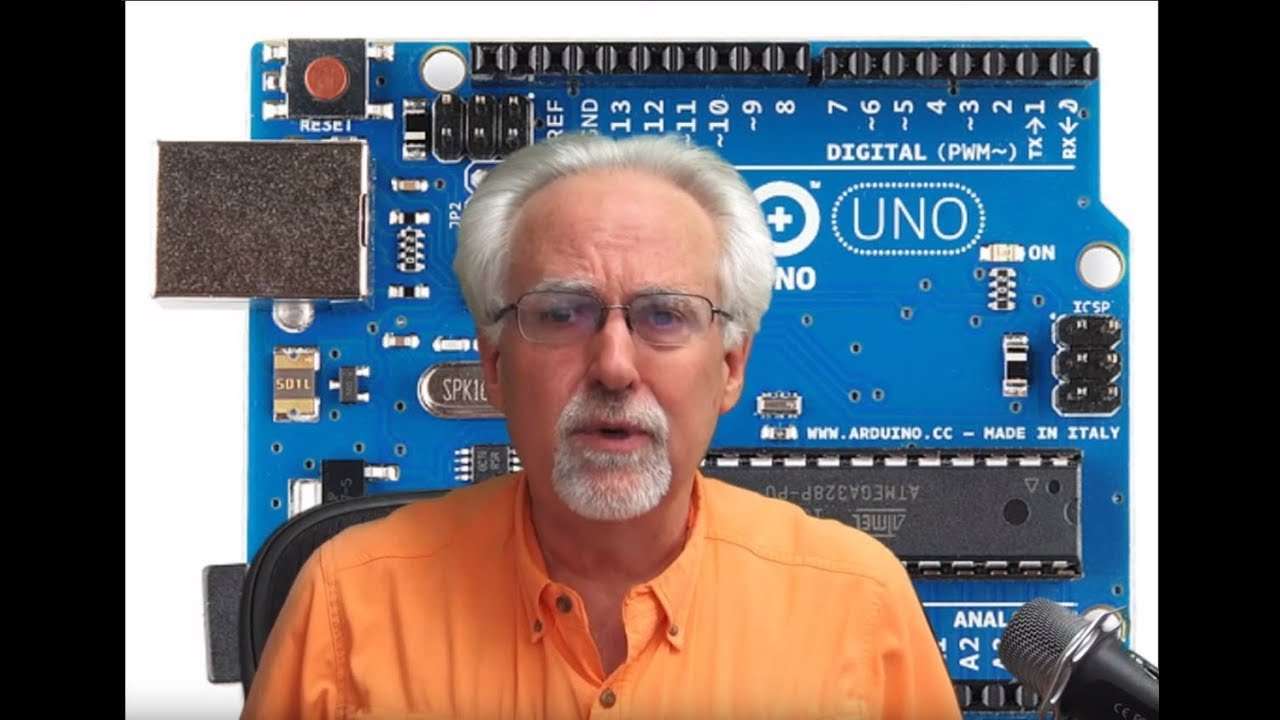
In this lesson we are create a portable temperature and humidity sensor using the DHT11 sensor and an LCD display. In order to facilitate a more practical portable system, we are using an arduino nano, since it can be plugged directly into the breadboard. You can get the kit I am using for this series at the following link: https://amzn.to/2I7N4Ek I strongly suggest picking up an arduino nano, since it can plug directly into the breadboard, making a portable system more practical. You can pick one up here: https://amzn.to/2WXTC2M As projects get more complicated in these lessons, you guys really need to get a set of breadboard jumper wires which allow you to make neater connections on the board in your projects. You can pick a pack of these wires up here: https://amzn.to/2XrY5Kq In addition as projects get more complicated, you are going to need a bigger breadboard. This is a reasonable one here: https://amzn.to/2IY4d3M Follow this lesson at our Free WEB site: https://toptechboy.com/arduino-tutorial-52-portable-temperature-and-humidity-sensor-with-dht11/ You guys can help me out over at Patreon, and that will help me keep my gear updated, and help me keep this quality content coming: https://www.patreon.com/PaulMcWhorter [Disclosure of Material Connection: I am a participant in the Amazon Services LLC Associates Program, an affiliate advertising program designed to provide a means for sites to earn advertising fees by advertising and linking to amazon.com. This means if you visit the link and purchase the item, I will receive an affiliate commission. Regardless, I only recommend products or services I use personally and believe will add value to my readers.] #Arduino
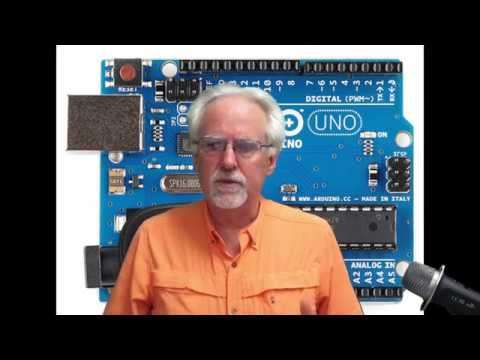
In this lesson we are working towards a portable temperature and humidity sensor using the DHT11 sensor and an LCD display. In order to facilitate a more practical portable system, we are using an arduino nano, since it can be plugged directly into the breadboard. You can get the kit I am using for this series at the following link: https://amzn.to/2I7N4Ek I strongly suggest picking up an arduino nano, since it can plug directly into the breadboard, making a portable system more practical. You can pick one up here: https://amzn.to/2WXTC2M As projects get more complicated in these lessons, you guys really need to get a set of breadboard jumper wires which allow you to make neater connections on the board in your projects. You can pick a pack of these wires up here: https://amzn.to/2XrY5Kq In addition as projects get more complicated, you are going to need a bigger breadboard. This is a reasonable one here: https://amzn.to/2IY4d3M Check out our WEB site: https://toptechboy.com/arduino-tutorial-51-dht11-temperature-and-humidity-sensor-with-lcd-display/ You guys can help me out over at Patreon, and that will help me keep my gear updated, and help me keep this quality content coming: https://www.patreon.com/PaulMcWhorter [Disclosure of Material Connection: I am a participant in the Amazon Services LLC Associates Program, an affiliate advertising program designed to provide a means for sites to earn advertising fees by advertising and linking to amazon.com. This means if you visit the link and purchase the item, I will receive an affiliate commission. Regardless, I only recommend products or services I use personally and believe will add value to my readers.] #Arduino

In this lesson we show you how to measure temperature and pressure using the DHT11 sensor. The needed library does not come with the arduino download, but the video shows you how to intall the needed library. You can get the kit I am using for this series at the following link: https://amzn.to/2I7N4Ek This is a heads up that in lesson 51, you will be able to have a much more practical and elegant solution if you use an arduino nano instead of the uno, which we have been using. Go ahead and get ready for lesson 51 by picking up a nano here: https://amzn.to/2WXTC2M As projects get more complicated in these lessons, you guys really need to get a set of breadboard jumper wires which allow you to make neater connections on the board in your projects. You can pick a pack of these wires up here: https://amzn.to/2XrY5Kq In addition as projects get more complicated, you are going to need a bigger breadboard. This is a reasonable one here: https://amzn.to/2IY4d3M Check out all the great Free educational resources at our WEB site HERE: https://toptechboy.com/arduino-tutorial-50-how-to-connect-and-use-the-dht11-temperature-and-humidity-sensor/ You guys can help me out over at Patreon, and that will help me keep my gear updated, and help me keep this quality content coming: https://www.patreon.com/PaulMcWhorter [Disclosure of Material Connection: I am a participant in the Amazon Services LLC Associates Program, an affiliate advertising program designed to provide a means for sites to earn advertising fees by advertising and linking to amazon.com. This means if you visit the link and purchase the item, I will receive an affiliate commission. Regardless, I only recommend products or services I use personally and believe will add value to my readers.] #Arduino

In lesson 48 we gave the homework assignment to create a simple calculator that could add, subtract, multiply and divide using the arduino, and then creating a nicely formatted output on the LCD. In this lesson we take you through the solution to the assignment You can get the kit I am using for this series at the following link: https://amzn.to/2I7N4Ek As projects get more complicated in these lessons, you guys really need to get a set of breadboard jumper wires which allow you to make neater connections on the board in your projects. You can pick a pack of these wires up here: https://amzn.to/2XrY5Kq In addition as projects get more complicated, you are going to need a bigger breadboard. This is a reasonable one here: https://amzn.to/2IY4d3M Follow these lessons and other great content on our Free WEB site; https://toptechboy.com/arduino-tutorial-49-how-to-build-a-simple-calculator-with-lcd-display/ You guys can help me out over at Patreon, and that will help me keep my gear updated, and help me keep this quality content coming: https://www.patreon.com/PaulMcWhorter [Disclosure of Material Connection: I am a participant in the Amazon Services LLC Associates Program, an affiliate advertising program designed to provide a means for sites to earn advertising fees by advertising and linking to amazon.com. This means if you visit the link and purchase the item, I will receive an affiliate commission. Regardless, I only recommend products or services I use personally and believe will add value to my readers.] #Arduino